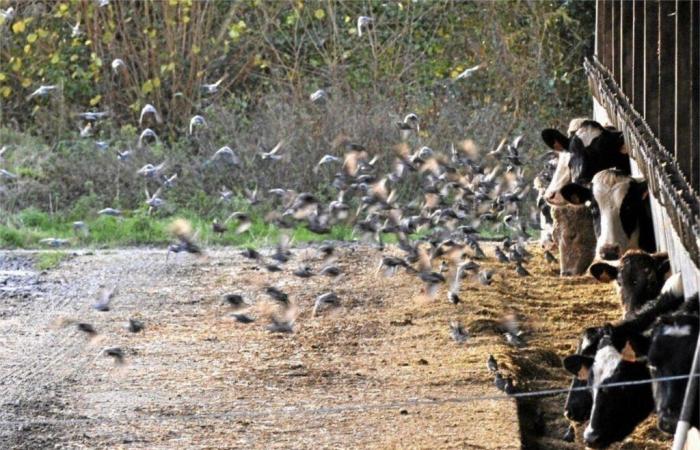Par
Jean-Philippe Massieu
Published on
Nov. 23, 2024 at 4:12 p.m.
See my news
Follow La Presse de la Manche
In this fall of 2024several farmers of the Channel already testify to a strong presence of European starlingsces migratory birds who take up their winter quarters in our department.
They have become the bane of farmers for several years.
In miscanthus in Sénoville
The mass presence of starlings, with an annual population varying from 400,000 to 700,000 individuals in the main roost of the Sèves and Baupte peat bog, and other small roosts spread across the department, causes lots of damage to agricultural operations: attacks on cereal seedlings, fort impact on the milk productionon the cattle growthnot counting the health and psychological risks.
The loss of earnings of milk production is around €10,000 per average Manchese exploitation per winter. Studies by the DDTM (Departmental Directorate of Territories and the Sea) in 2010 and Littoral Normand Breeding Council 2017 estimate losses of around 1 to 5 million euros per winter in the Manche department.
They arrived early and are already showing aggressive behavior like in the middle of winter, both in the stalls and on the winter sowings. There will be damage. We have had reports on several sites. We have several satellite dormitories which are set up particularly on the west coast, from the north to the south of the department. We will carry out counts in the coming days.
The Monday November 18, 2024on the sidelines of the action of the FDSEA and JA de la Manche unions on the maintenance of waterways and ditches, a farmer from Sénoville demonstrated a strong presence on his farm.
According to him, these starlings gather in a miscanthus growing plot located a few hundred meters away. This is already the case when winter 2022-2023in Saint-Loup, near Avranches.
“The cultivation of miscanthus is developing and it can be a point of vigilance», notes Antoine Métayer. The reed beds and bamboo groves are also popular roosts for starlings.
It happened that there were dormitories in the reed beds near Créances.
To protect themselves, at least in part, farmers can try to close their livestock buildings . The arrangements can be partly supported with assistance for small investments of the Department of Manche.
There is no new miracle recipe: scaring systems (or shooting in partnership with the hunters' federation) near silos and feeding tables but also in cereal plots during the emergence period.
Et « migrationare not finished.” They generally range “until December 5-10” .
“To do with the predicted cold snap if some will migrate further southand whether or not they will be replaced by others,” continues Antoine Métayer. But, still, their current behaviorl “does not bode well.”
Follow all the news from your favorite cities and media by subscribing to Mon Actu.






